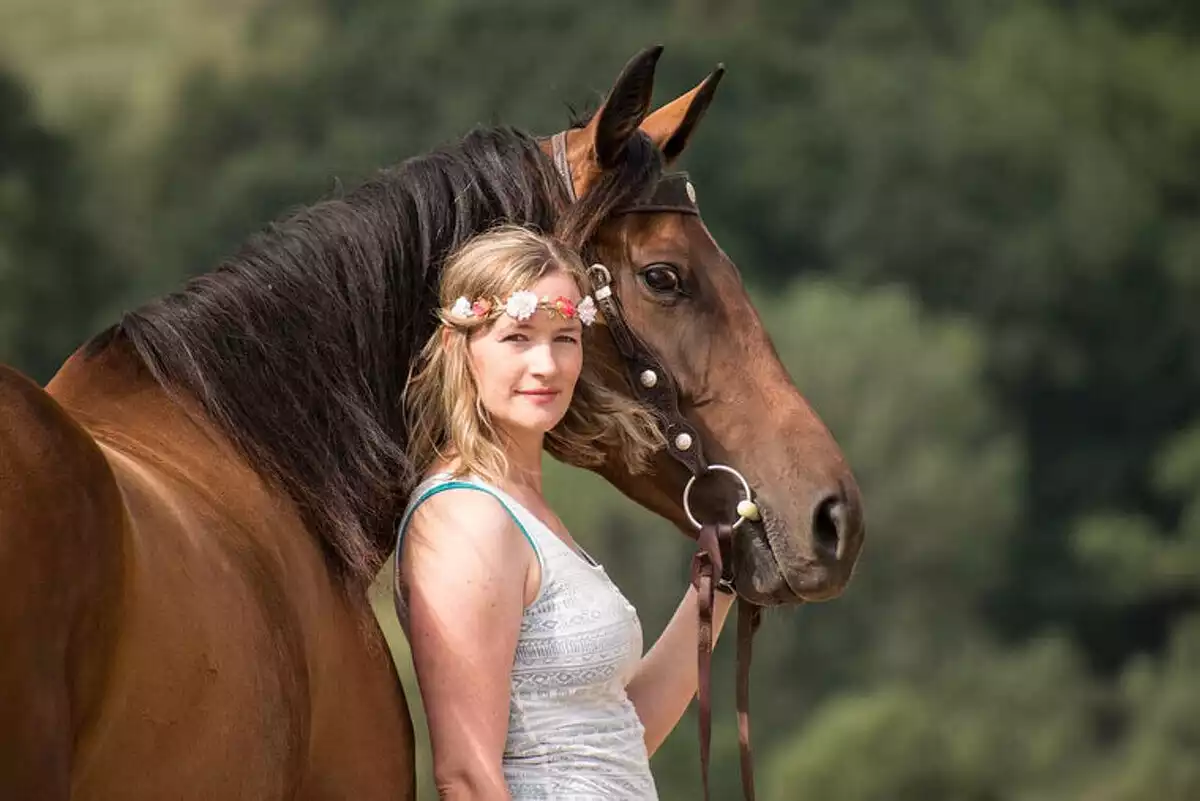
Epona is one of the best-known Celtic goddesses. Nowadays, young people associate this name to the video game “Legend of Zelda”, since it is the name of Link’s horse, who is the main character. The choice of this name is no coincidence since the Celtic goddess is closely related to horses. Here you can find more about this Celtic goddess of Nature, who devotedly watched over these animals and had a deep knowledge about healing with crystals.
- You might be interested in: The Celtic Wiccan Magic: an Ancestral Legacy
Who is Epona, the goddess of horses?
The name of the Celtic goddess Epona comes from the Latinization of the Gaulish name “epo”, which means horse. Thus, in Celtic mythology, Epona represents the goddess of horses and of all those associated with these animals: riders, breeders or stable workers.
By extension, the goddess of horses represents the nomadic Celtic people. In fact, she was the patroness of the Gaulish cavalry troops, who spread her cult outside Gaul.
Epona is sometimes known by other names, such as Mandica or Edain. In other mythologies, there are similar goddesses, such as Rhiannon (Pwyll’s wife, in Welsh mythology). She is believed to be the mother of the god Maponos, who is sometimes depicted as a colt.
[predef]mh-general-eng-489[/predef]
The Celtic goddess Epona is often described with the appearance of a Great Goddess, the World personified that gives birth to life in all its forms. Thus, she has the attributes of a fertility goddess, although she is generally associated with the animal species that inhabit the Earth. She is also known as a goddess of Nature.
Epona’s gift of healing with crystals
Epona’s attributes are those of a goddess of fertility, abundance (that is why she is depicted with the cornucopia or horn of plenty), protection, health, and healing. In this way, her name is also linked to the healing with crystals or minerals.
Regarded as queen of the fairies, Epona represents the connection between the tangible and the invisible world. This link is understood as the use of the energies contained in Nature to help the beings that inhabit it, whether they are plants, animals or people.
As a goddess, Epona also inspires men to use the healing power that is hidden in the most basic forms of existence, especially by using minerals, such as the healing with pure crystals found in Nature: amethysts, quartz, agates, etc.
As a goddess of Nature, it was believed that Epona was always willing to cure animals. Many followers of this goddess hang a horseshoe on their pets’ bed when they are suffering from some health problem.
The cult of Epona in the Roman Empire
The cult of the Celtic goddess Epona was one of the few (perhaps the only one) that arrived in Rome in the first century of the Christian era. When the Romans conquered the Gaulish territories, they tolerated her worship because they also worshipped horses. It was said that Epona was born of the love between a misogynist named Fulvio Stellus and a mare. The image of Epona soon won a prominent place in the stables of the Roman legions.
It is interesting to note that, for the Celts of Ireland, it was not unusual for the king to join a mare. What may seem a shocking fact nowadays had a very important symbolic value back then, since it represented the union between the heavenly father and an earthly mother, which had a sovereign role of production and reproduction. In Rome, she was given a feast day on December 18.
Epona’s representation in history and art
In iconography, Epona was depicted as a young woman (sometimes a girl) with long hair and a crown on her head, riding a mare without a mount like one of the Amazons, and carrying a cornucopia or horn of plenty.
Epona’s most famous depiction can be seen at the Landesmuseum in Trier, Germany. There she appears dressed in a long robe, next to a horse, holding a cup-like vessel in her right hand. The work dates back to the 2nd century of the present era.
In her iconography, she is also depicted next to a bird or a dog, which connects her to psychopomps, that is, characters that accompany the dead on their post-mortem journey to Heaven or to Hell. In fact, in some cultures, the horse is often considered to be the one that leads the soul of the deceased to the afterlife.
In literature, Plutarch, Juvenal and Apuleius, among other writers, mentioned Epona in their texts.
- You may be interested in Celtic Beltane: The Festival of Fire and Fertility on May 1st
